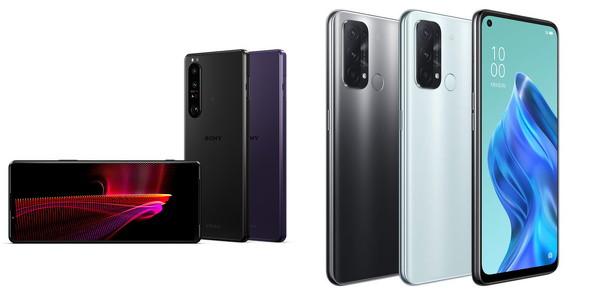Even if SIM lock is prohibited in principle, the problem will not be solved? / Let's buy a smartphone at a great price! : Mobile Weekly Top 10
ITmedia Mobile Weekly Access Top10
July 19, 2021 - July 25, 2021
- Impact on the industry of ``prohibition of SIM lock principle'' The reason why it is not all about benefits
- Up to 100,000 yen or 50% return - summer PayPay festival in July Until the 25th, the return rate will be increased in the final week
- Compare with major MVNOs! Price Summary of Latest SIM Fleece Smartphones (Summer 2021 Edition)
- Rakuten Point is the point service most used by smartphone users; only DOCOMO dominates with d points
- At 4 carriers Compare! The latest Android smartphone price summary (Summer 2021 edition)
- Ahamo's question solved! Comprehensive check from contract method to compatible smartphones and usability
- "iPhone 12" is the best replacement! Why did the author regret buying the 12 Pro? Comparing Y!mobile and UQ mobile price plans (summer 2021 version)
- A must-see for those using the old plan! 1GB to 20GB rate plans to choose according to usage
- Mr. Terao of Softbank reveals his true feelings about eSIM-"I wanted to do it, but I shouldn't have done it in a hurry"
The "ITmedia Mobile Weekly Top 10" introduces the top 10 articles by tallying the number of article accesses on ITmedia Mobile in a week. This time, we have summarized and summarized the week from July 19, 2021 to July 25, 2021.
Even if the SIM lock is prohibited in principle, new issues will arise...?The most accessed article this time was an article explaining the impact of the ``prohibition of SIM lock in principle'' announced by the Ministry of Internal Affairs and Communications and the remaining issues.
As mentioned in this article, mobile phone terminals released after October 1, 2021 will in principle not be sold with a SIM lock. This is an effort to revitalize switching between carriers, including MVNOs.

However, especially in the case of Android smartphones, due to the effect of customizing the frequency band (Band) that can be used depending on the destination carrier, even if the device is from the same manufacturer, communication performance may not be fully demonstrated if used with a carrier other than the relevant carrier. .
To be more specific, recent Sharp terminals are compatible with major bands used by domestic carriers. "AQUOS R6" is sold by NTT Docomo and Softbank, and has not been released on au (KDDI and Okinawa cellular phone) or Rakuten Mobile, but models for NTT Docomo and Softbank are also available from four companies including au and Rakuten Mobile. It covers all major bands. With this, you can continue to use your device even if you switch carriers.
On the other hand, Sony (formerly Sony Mobile Communications) and Samsung Electronics terminals do not cover some of the major bands of carriers other than the destination. Therefore, as mentioned above, some carriers may not be able to bring out the communication performance as expected.
When looking at SNS, there are voices saying, "Isn't this done to prevent carriers from moving to other companies?" It is up to the manufacturer to decide whether or not to support the Band. It is the manufacturer's job to obtain certification as a wireless device both in Japan and overseas.
The more bands we support, the more tests we have to do before launch. More tests mean more costs. In other words, if you increase the number of compatible bands, it is easy to bounce back on the terminal price.
In terms of covering many bands, the iPhone comes to mind. There are 2 to 4 variations per iPhone model, and they are sold separately by country and region, and the certification required in Japan is acquired only for variations sold in Japan. It seems to be a balance of cost, but unlike many Android smartphones, the iPhone is characterized by a wide range of compatible bands for all variations.
In order to increase the number of compatible bands for Android smartphones of domestic carriers, I think that hardware should be standardized between carriers. I feel that the body color (or logo) alone is enough for the "carrier monopoly" element. However, in that case, it seems that it will be difficult in terms of "economies of scale" for manufacturers that supply only to specific carriers or minority carriers.
I would like to pay attention to what kind of impact the ban on SIM locks will have on carriers and terminal manufacturers.
Even with the same model, the price varies depending on the carrier... (left is "Xperia 1 III", right is "OPPO Reno5 A")In the 3rd place in the ranking are major MVNOs, 5 In the first place, an article comparing the prices of terminals of major carriers entered.
In the ranking two years ago, the price comparison article focused on "Xperia 1 III" ranked second in the number of accesses, but recently articles about terminal prices are often read. There are many people who want to buy not only high-end models, but also low-end models at a reasonable price.
As for me, I was planning to buy the summer 2021 model in July, but I feel like I missed the timing due to various reasons... If you are thinking "I'm going to buy it now!", please refer to the two articles before considering it!